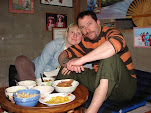
Ah, Celis White.

This is some tasty, tasty beer. For folks who like Hoegaarden, this is similar, but MUCH much more flavorful. And it was created by the same man who created Hoegaarden, Pierre Celis.

To make a long story a bit shorter; Pierre Celis created Hoegaarden in 1966, opening the brewery in his native Belgium. He had been lamenting the fact that large scale lager production was taking over and the old style of Belgian White Beers was disappearing. So, he opened a brewery and set about selling white beer, Hoegaarden.
His venture become very successful over time. His brewery had a major fire in 1985, was under insured and he sold a controlling stake to Artois, which later become InterBrew, then InBev. This is a major corporation and they reportedly wanted to introduce cost saving measures and high gravity brewing, changing the recipe and affecting the quality of Hoegaarden. Celis sold his remaining 40% stake in the company.
He later started up a new brewery in Austin, Texas and again set about making white beer, this one called Celis White, starting in 1992. Unfortunately, his financial partners in the business sold a controlling stake to Miller Brewing, who, like Artois/InterBrew, set about meddling in the recipe and trying to introduce cost cutting measures, thus repeating history and affecting the flavor of the beer.
Miller bought the remaining shares in 2000, then closed the brewery in 2001. Then Celis White was gone for a while.
But now it's back!
The rights to the name and recipe were bought in the States by Michigan Brewing:
Michigan Brewing
And in Europe, it's brewed by Van Steenberge:
Brouwerij Van Steenberge
And, Hop Devil, the beer place in the blog below, has the Van Steenberge version. It's similar to Hoegaarden, but with ten times as much flavor. It's just a much, much better beer. And so, it's a real joy to drink. I'm happy to see the Celis name and beer revived in a proper manner so people can drink a truly delicious white beer. If you have the chance to try this beer, do not pass it up! And don't drink the draft beer. Buy the bottle, pour 90% of it, then shake it up to get that yeast mixed up and pour the yeast into your glass. Much tastier this way.
In Depth Information on the History of Celis
Tasting notes.
Real Ale making more Celis beers.


























































































